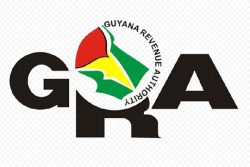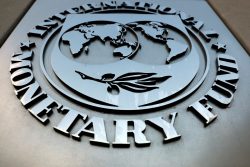Although the Guyana Power and Light Inc. (GPL) is still awaiting the repair of its 69kV submarine cable, it says its contingency plans have resulted in power being fully restored around the country.
On June 2nd, one of GPL’s submarine cables was damaged by what was suspected to be an anchor from a vessel. The damage resulted in sporadic blackouts as the utility’s distribution system was crippled.
According to Ryan Ross, GPL’s Divisional Director of Projects, while power has been restored and there is currently no load shedding schedule being employed, the main submarine cable that was damaged last month has not yet been fixed.
Ross said GPL is currently waiting on the manufacturer to build and send the repair kit, which they have already ordered.
Ross also dispelled reports about a second cable being damaged earlier this month and explained that while it was suspected, it was not true and that there was an incident that involved a ship anchoring in the area of the cable, there was no damage.
As a result of the damage to the cable last month and previous incidents, questions have been raised about the reason why GPL does not work along with the Maritime Administration Department (MARAD) to prevent ships from anchoring in the area where the cables are located.
However, Ross noted that there is a system in place where the cable’s location is always identified on the mariners chart but the power company cannot enforce the regulations. He added that they have had consistent positive discussions on working together to prevent such incidents from occurring.
As part of its emergency response to the damage to the cable, the company decided to run a smaller 13.8 kV submarine cable from Vreed-en-Hoop to Kingston to supply additional power and carried out maintenance on Kingston generating units.
Ross explained that while linking the substations with the smaller cable was not enough, it assisted significantly in restoring full power.
While the current capacity is enough to serve the country, Ross said that the company still needs to ensure that the submarine cable is fixed so that it can have more flexibility, especially during peak hours, when there is a higher demand for electricity.
“GPL is working hard towards restoring it completely. Even though we have full power now, we would like to have the flexibility so that if one area goes down, we can put together a contingency plan quickly. While we are having full power, we are not very convinced we can operate the power system in an efficient manner. We require the link back to Vreed-en-Hoop,” he said, while stating that the submarine cable should be repaired within another two months.
Divisional Director of Operations Bharat Harjohn had said that the cable developed a fault on June 2nd, around 7.21 pm, which they suspect to have been caused by the anchor of a vessel. He said their distance relay detected that the fault was around 714 metres from the Kingston substation.
An examination of the cable by the power company had shown that the armor and insulation protection of the cable bore damage which extended to the conductors within.
As a result of the damage, the power company had lost a total of 14mW of power fed from the Vreed-en-Hoop Power station, which had resulted in the eastern side of the Demerara-Berbice Interconnected System (DBIS) having a capacity of approximately 90mW of power available to satisfy a demand of 100mW across the grid.
The company’s woes were also compounded after their second and third largest generating units, which contribute 7.8 and 6.9mW respectively to the Kingston 2 plant, went down.









